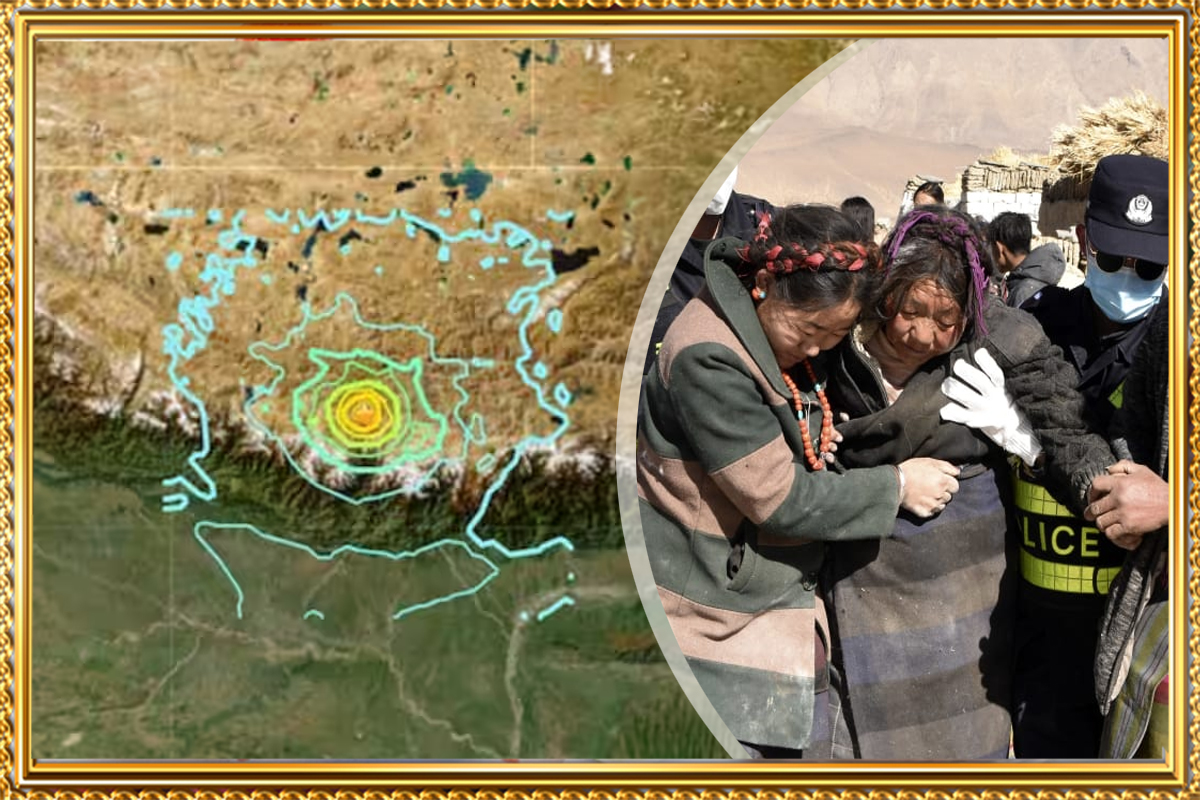- Home
- How the Recent 7.1 Earthquake in Tibet Impacted the Region and the Response Efforts
How the Recent 7.1 Earthquake in Tibet Impacted the Region and the Response Efforts

On a recent day, a powerful 7.1-magnitude earthquake struck Tibet's Shigatse region, causing widespread fear, damage, and disruption. This post explores the causes of the earthquake, its impacts on the local population, the environment, and how governments and humanitarian organizations are responding. We'll also delve into the lessons learned from past earthquakes and the measures taken to help the people of Tibet recover.
Earthquakes are one of the most devastating natural disasters, and Tibet, with its seismic activity due to its location along the Himalayan tectonic plate boundary, is no stranger to such events. Recently, a 7.1-magnitude earthquake hit Tibet's Shigatse city, sending tremors across the region and causing widespread damage. Understanding the causes, effects, and emergency response to such an event is crucial not only for Tibetans but also for people in neighboring regions like Nepal and India. In this post, we will explore how the earthquake occurred, its societal impacts, the response efforts, and the lessons learned from past disasters that are aiding in the current recovery process.
Causes of the 7.1-Magnitude Earthquake in Tibet
Societal Impacts of the Earthquake
How the Earthquake Affects Wildlife in Tibet
Emergency Response and Aid Efforts
Lessons Learned from Previous Earthquakes
Comparison to Previous Earthquakes in the Region
Traveling to Tibet After the Earthquake: Is It Safe?
FAQs
CONCLUSION
Causes of the 7.1-Magnitude Earthquake in Tibet
These plates constantly move toward each other, causing the accumulation of stress along faults, which eventually releases in the form of earthquakes. Tibet lies at the intersection of several such faults, making it one of the most earthquake-prone areas in the world.
- In particular, the 7.1-magnitude earthquake in Shigatse occurred along a major fault line. It is worth noting that earthquakes in Tibet can have far-reaching effects, given the region's mountainous terrain and large population density in some areas. With such a powerful quake, the ground movement can cause significant destruction, particularly in urban areas and regions with inadequate infrastructure.

Societal Impacts of the Earthquake
Positive Aspects:
- 1. Strengthened Disaster Response Systems: The recent earthquake has proven the resilience of Tibet's disaster management systems. Authorities quickly mobilized rescue teams, distributed emergency supplies, and provided immediate medical care to victims.
- 2. Global Solidarity and Aid Efforts: International organizations, including the Red Cross, have joined in providing support for relief efforts. They are collecting funds and dispatching aid to the affected areas. This global solidarity highlights the power of collective action in disaster recovery.
- 3. Improved Earthquake Awareness: The recent quake has raised awareness about earthquake preparedness among local communities. Schools, businesses, and government buildings are now more actively implementing earthquake safety protocols.
- Negative Aspects: 1. Loss of Life and Property: Unfortunately, a large number of casualties and injuries have been reported, and many families have lost their homes. The emotional and financial toll on the affected population is immeasurable.
- 2. Infrastructure Damage: Roads, communication systems, and bridges have been severely damaged, hampering relief efforts and causing disruptions in daily life. The long-term recovery of infrastructure could take years, further complicating the recovery process.
How the Earthquake Affects Wildlife in Tibet
Tibet's unique wildlife, including endangered species like the Tibetan antelope and snow leopard, has also been impacted by seismic activity. The destruction of habitats, coupled with changes in the landscape due to landslides and soil shifts, disrupts animal migration patterns and access to food sources. Rescue efforts for wildlife are often overlooked during human-focused relief missions, but they are equally important for the ecological balance of the region.
Emergency Response and Aid Efforts
The earthquake has prompted an immediate and coordinated response from the government of China, as well as from various international aid organizations. The Chinese government has deployed rescue teams, medical personnel, and engineers to the affected areas to provide emergency relief and begin the rebuilding process. Relief supplies such as food, water, medicine, and shelter materials are being distributed to affected communities.
- Additionally, drone technology is being utilized for aerial surveys of the damage and to deliver supplies to areas that are otherwise inaccessible. The Chinese air force, along with the army, is using these drones to drop essentials and gather intelligence on the most affected regions.
Lessons Learned from Previous Earthquakes
The devastation caused by the 2015 Nepal earthquake provided valuable lessons that are now being applied in Tibet. Thanks to technological advancements, scientists can now predict earthquakes with more accuracy, providing people with a small window of time to evacuate and seek shelter.
- Moreover, the need for strong, earthquake-resistant infrastructure has become evident. In response, many buildings in Tibet are being designed with seismic safety in mind. Awareness campaigns about earthquake preparedness have become more prevalent, and local governments are taking proactive steps to educate the public about how to protect themselves during an earthquake.
Comparison to Previous Earthquakes in the Region
The 7.1-magnitude earthquake in Tibet is one of several major seismic events that have occurred in the region. When compared to the 2015 Nepal earthquake, the Tibet earthquake caused fewer fatalities, partly because the affected areas were more sparsely populated and because of the lessons learned from past disasters. Nevertheless, the Tibet quake's impact on infrastructure and the environment is still significant, and recovery will take time.
Traveling to Tibet After the Earthquake: Is It Safe?
While the earthquake's immediate effects have caused some disruptions, travel to Tibet is generally safe as long as one stays informed about the current conditions. It is advisable to check with local authorities and travel advisories to ensure the safety of specific areas before planning a trip. Travelers should also be prepared for possible delays or changes in itineraries due to ongoing recovery efforts.
FAQs
- How can I help the earthquake victims in Tibet? You can donate to reputable organizations like the Red Cross or the World Food Programme, which are providing aid to the affected areas. Volunteering for local relief efforts is another way to contribute.
- What caused the earthquake in Tibet? The earthquake was caused by tectonic activity along the boundary between the Indian and Eurasian plates, which leads to stress accumulation and eventual release in the form of seismic events.
- How long will it take for Tibet to recover from this earthquake? Recovery will likely take several years, as rebuilding infrastructure, providing aid, and restoring livelihoods is a complex and lengthy process.
- Is it possible to predict when the next earthquake will strike Tibet? While scientists can predict seismic activity to some extent, pinpointing the exact time and location of an earthquake remains challenging. Early warning systems, however, are becoming more effective.
Conclusion

The 7.1-magnitude earthquake in Tibet has posed significant challenges to the region, from loss of life to infrastructure damage. However, the prompt emergency response, international aid, and lessons learned from previous earthquakes have helped mitigate some of the worst effects. In the long term, recovery will require extensive efforts, not only to rebuild infrastructure but also to provide psychological and emotional support to those affected. As we look forward, improving disaster preparedness, advancing early warning systems, and ensuring strong, resilient infrastructure will be essential in mitigating the impact of future seismic events.
0 Comments
Top Rated Adventure
Where to Find the Best Holiday Decorations and Free Tours in Washington D.C.
- 25 Nov 2024
- 0 0


















Post a comment